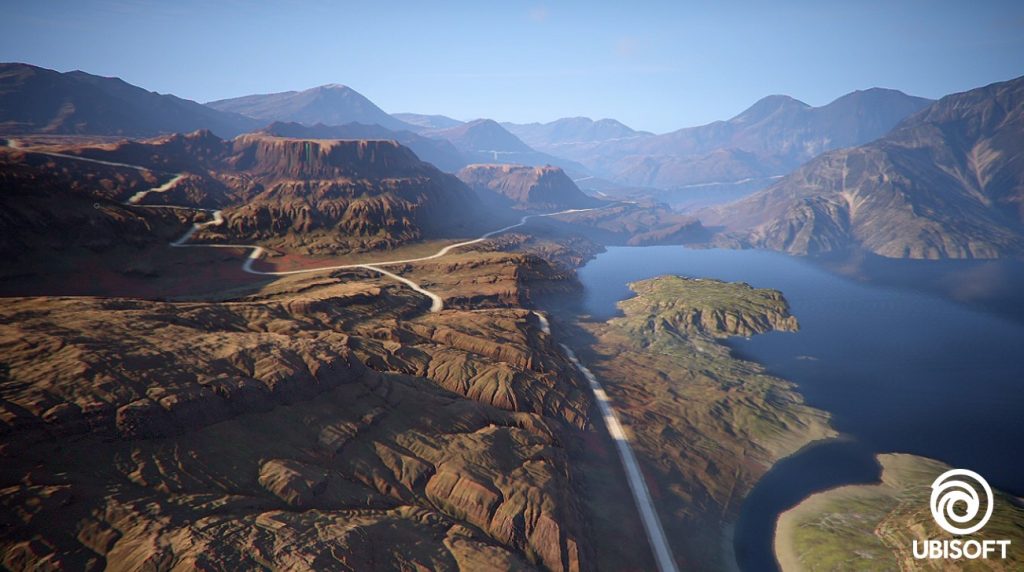In a previous blog, we discussed how procedural generation helps game designers create video game content at unprecedented scale and how coming up with good procedurally generated content is an art. The list of games using procedural generation is growing and includes prominent examples like Ubisoft’s Ghost Recon Wildlands and Ghost Recon Breakpoint, Cloud Imperium’s Star Citizen, Hello Games’ No Man’s Sky, or Coffee Stain’s recent survival game Valheim. In fact, it seems that procedural generation – or, more generally, any form of autonomous or semi-autonomous generation – seems to be a necessity rather than an option for many games. Gamers want content, and they want a lot of content!
Consider how Ubisoft used procedural generation to generate vast game worlds in their Ghost Recon Wildlands and Ghost Recon Breakpoint games (both are third person tactical shooter video games). The image shows how a procedurally generated winding road meanders through an open and wide terrain. Of course, the final game looked much different, with vegetation, power lines, and all sorts of other game elements.
(source: Ubisoft)
But what does it mean for game developers to work with such procedural tools? After all, they are tools that make decisions on behalf of the designer… and while they are deterministic tools, they are also capable of generating quite complex outcomes that are hard (or impossible) for the designer to anticipate. Often, the outcome the tool generates is surprising for the designer who ran the tool.
To address this unpredictability of procedural tools, one important practice that designers use is experimentation.
First, when the designer works with a specific tool, he or she must understand how to specify parameters (i.e., the input) and get a feeling for how different parameter settings can lead to different results. Imagine a situation where you, as a designer, tweak parameters, re-run a tool, and then evaluate the outcome of that tool. You keep doing this until you are happy with the result. This is quite different to manually working on some design artifact.
Second, the designer might even change the tool’s underlying design logic (or chose to work with a different tool altogether). For instance, when developing the road network for Ghost Recon Wildlands, developers at Ubisoft did not only use one specific algorithm and re-ran this algorithm until they were happy with the result. Instead, they experimented with different algorithms. See how these experiments led to different results:
Generation of a road using different algorithms (source: Ubisoft)
Clearly, all this seems to be quite different to a traditional, manual design process. Instead of handcrafting some design outcome in an iterative fashion, designers modify tools, run tools, and evaluate the tools’ outcomes. Of course, they can still alter what a tool has generated. In addition to their traditional role of craftspeople, designers are now tool experimentalists who have powerful, increasingly autonomous design tools at their disposal.
For more details, see:


One Comment
Comments are closed.